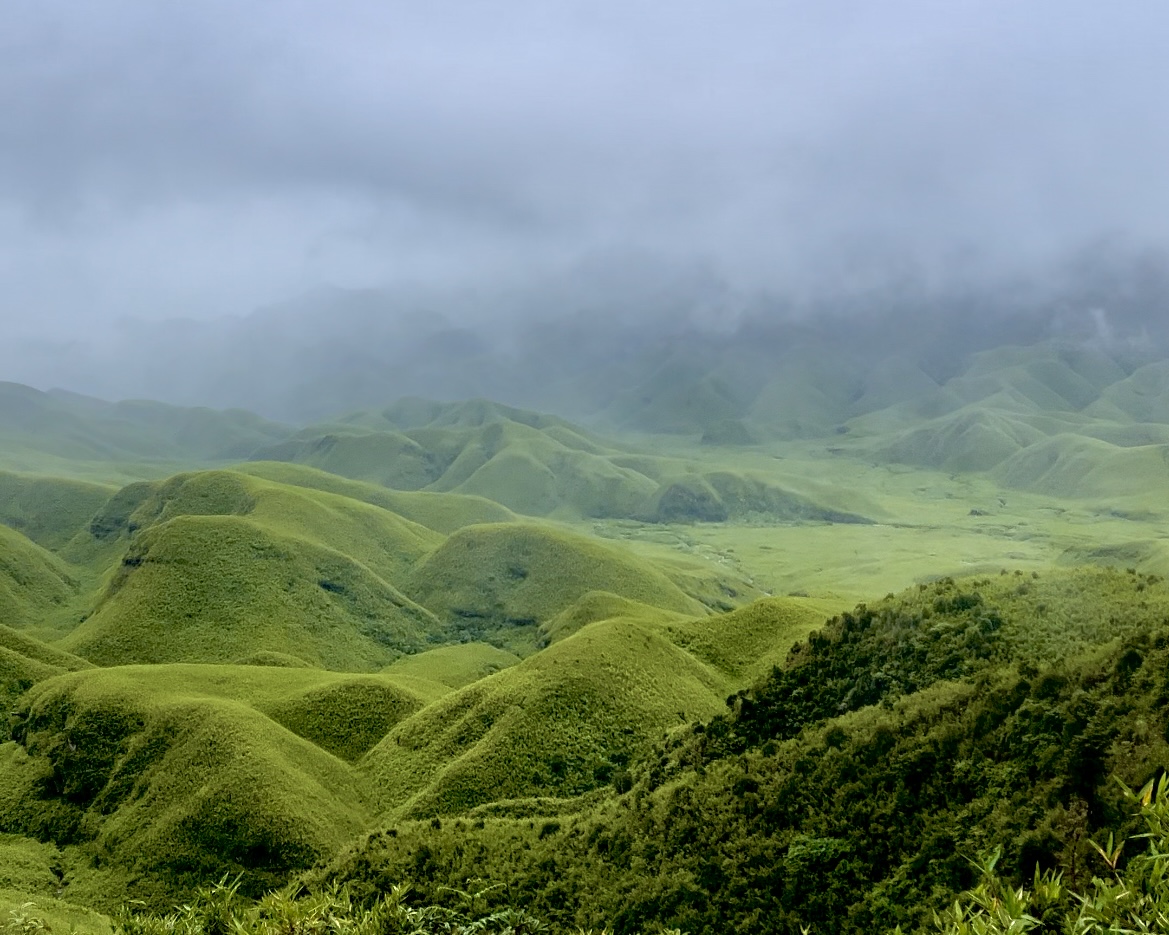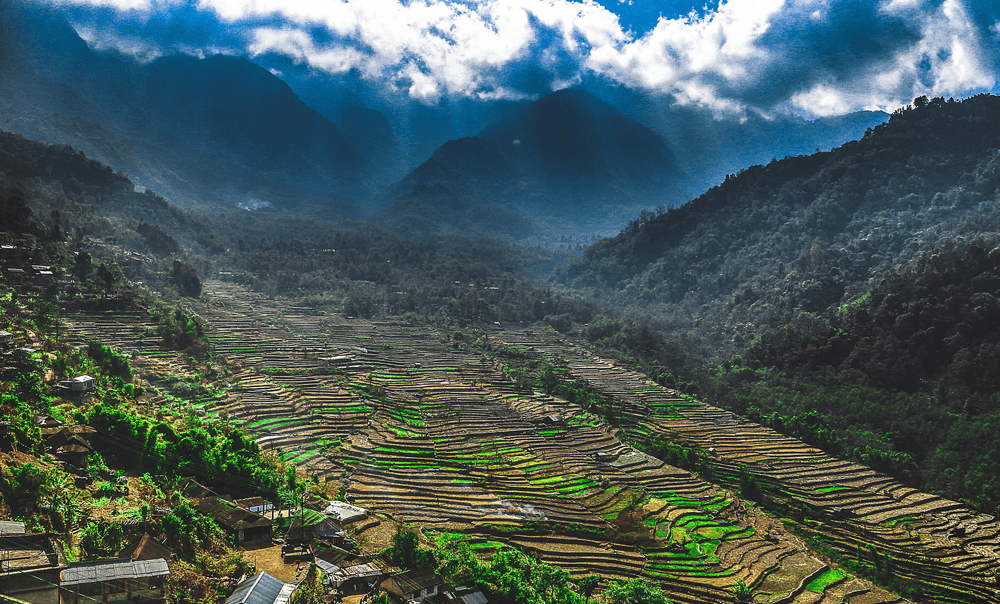Nestled in the northeastern state of Nagaland, Sheanghah Chingnyu is a village that lies approximately 26 kilometers away from the Mon district headquarters. This village, while small in size, holds a wealth of history, culture, and tradition that offers a unique and immersive experience for those who visit.
Location and Significance
Sheanghah Chingnyu is strategically located below the foothills of International Border Pillar 152, sharing its border with Myanmar. This proximity to the international border has not only influenced the cultural and social dynamics of the village but also added layers to its historical significance. The village is enveloped in lush green landscapes, providing a stunning backdrop to the rich cultural heritage that it proudly preserves.
A Glimpse into the Past: The Headhunting Culture
One of the most intriguing aspects of Sheanghah Chingnyu is its history of headhunting, a practice that was once prevalent among the Konyak Nagas, the dominant tribe in this region. Headhunting was more than just a tradition; it was a deeply rooted cultural practice that symbolized bravery, honor, and social status. The warriors who brought back the heads of their enemies were revered and respected, and these trophies were often displayed in the village as a testament to the warrior’s valor.
While the practice of headhunting has long been abandoned, the stories and relics from that era continue to live on, offering visitors a fascinating glimpse into the village’s past. The remnants of this bygone era are preserved in various forms, including oral histories passed down through generations, as well as tangible artifacts that can be found in the village.
The Angh’s Palace: A Window into Royalty

At the heart of Sheanghah Chingnyu lies the Angh’s palace, an imposing structure that stands as a symbol of the village’s rich heritage. The Angh, or king, is a hereditary position that has been passed down through generations, and the palace serves as both the residence of the Angh and a repository of the village’s history.
The house is one of the most visited landmarks in the Mon district, and for good reason. It houses a remarkable collection of wild animal skulls, elephant tusks, and other ancestral objects that have been accumulated over the centuries. Among the most notable items in this collection are the gongs, also known as Myanmar bells, which were brought to the village from across the border. These gongs are not just musical instruments; they are symbols of the deep cultural ties that exist between the people of Sheanghah Chingnyu and their neighbors in Myanmar.
The house is more than just a building; it is a living museum that offers a window into the lives of the Konyak Nagas. Visitors can explore the various rooms of the palace, each filled with artifacts that tell the story of the village’s past. From the intricately carved wooden doors to the weapons used in the days of headhunting, every corner of the palace holds a piece of history.
Experiencing the Village: A Blend of Tradition and Nature
Sheanghah Chingnyu is not just about its history; it is also a place where tradition and nature coexist harmoniously. The village is a treasure trove of traditional customs and practices, many of which have been preserved over the years. For visitors, this offers a unique opportunity to experience a way of life that has remained largely unchanged for centuries.
1. Visit the Angh’s Palace

The first stop on any visit to Sheanghah Chingnyu should be the Angh’s palace. Here, you can delve into the rich history of the Konyak Nagas and learn about the role of the Angh in the village’s administration. The palace is a testament to the village’s resilience and its commitment to preserving its heritage.
As you explore the palace, you’ll gain a deeper understanding of the cultural significance of the various artifacts on display, from the animal skulls that once symbolized power and strength to the gongs that were used in religious ceremonies.
2. Explore Neighboring Villages
A visit to Sheanghah Chingnyu is incomplete without spending some time in the neighboring villages. These villages, much like Sheanghah Chingnyu, are steeped in tradition and offer a glimpse into the daily lives of the local people. Take the time to sit down with the senior citizens of the village over a cup of tea and some snacks. These elders are the custodians of the village’s history and traditions, and they have many stories to share about the days of old. Engaging with them is not only a way to learn about the past, but it also fosters a sense of connection and understanding with the local community.
3. Visit the Blacksmiths and Local Gun Makers
Sheanghah Chingnyu is also known for its skilled blacksmiths and local gun makers. These artisans continue to practice their craft using traditional methods that have been passed down through generations. Visiting their workshops offers a unique opportunity to see these craftsmen at work and to learn about the tools and techniques they use. The local muzzle-loaded guns, once used in hunting and warfare, are now mostly made as souvenirs, but the skill and craftsmanship involved in making them are still very much alive.
4. Experience Jhum Cultivation
Agriculture is the mainstay of life in Sheanghah Chingnyu, and jhum cultivation, or slash-and-burn agriculture, is a traditional farming method that is still practiced in the village. This method involves clearing a piece of land by cutting down the vegetation and burning it to prepare the soil for planting. While this practice has faced criticism in recent years for its environmental impact, it remains an integral part of the village’s agricultural system. Visitors can observe this process and gain insights into the challenges and rewards of traditional farming.
5. Sightseeing and Village Tour
The natural beauty of Sheanghah Chingnyu is another reason to visit. The village is surrounded by stunning landscapes, from rolling hills to dense forests, making it an ideal destination for nature lovers. A guided village tour is a great way to explore the scenic beauty of the area while also learning about the local flora and fauna. The fresh air, serene environment, and picturesque views make for a relaxing and rejuvenating experience.
Mt. Sahgoth trek
Across the Indo- Myanmar border belt there lies a high hill. It is none other than Sahgoth hill. Sahgoth hill is one of the highest hill top in Mon district with more than 2500 metres high. It also appear like a high wall between the two nations ( India- Myanmar). Over the summit of Sahgoth hill there lies an International Border pillar 152 . Sahgoth hill holds great signifances from different perspectives. Historically, due to strategic location Sahgoth hill can find it’s place as it provide a military base to English and American soldiers at different intervals of time during World War ll era. The rich flora and fauna of Sahgoth hill is another source of attraction to many. Since time immemorial the Sahgoth hill has never been cultivated as such it still maintain its virginity. As per the local trekkers account an alleviation to the hill were so enjoyable having encounter the unique environment over there despite extreme exhaustion following 6-7 hours walk from Sheanghah Chingnyu. It is also said that the summit of Sahgoth hill provide a breathtaking view, towards the eastern part one may see the Chindwin river of Myanmar and Brahmaputra river and Assam valley on the Western side.
Farewell to Sheanghah Chingnyu
As your time in Sheanghah Chingnyu draws to a close, take a moment to reflect on the experiences you’ve had and the memories you’ve made. The village, with its rich history, vibrant culture, and breathtaking natural beauty, leaves a lasting impression on all who visit. With no regrets, bid adieu to Sheanghah Chingnyu, carrying with you the stories, sights, and sounds of a place where the past and present coexist in perfect harmony.




Leave a Reply